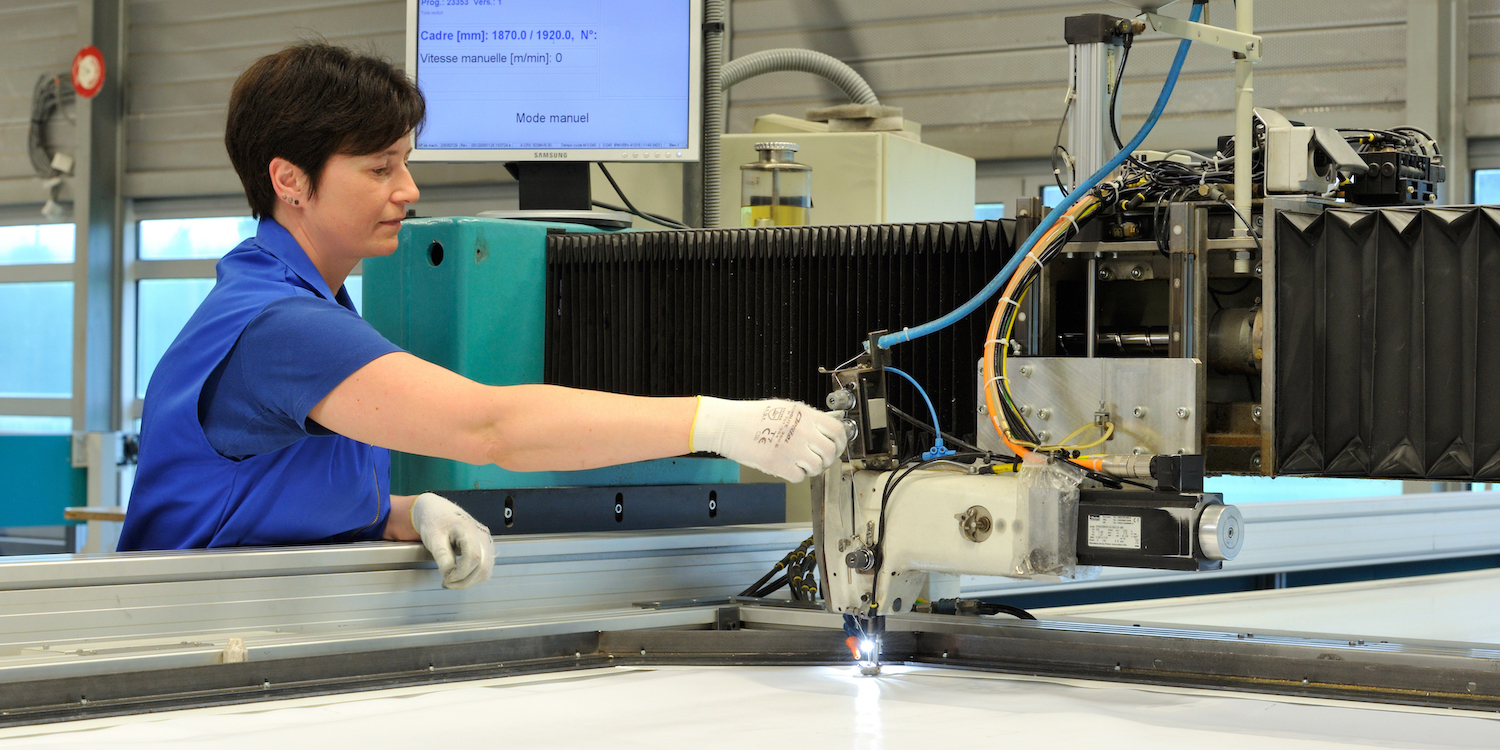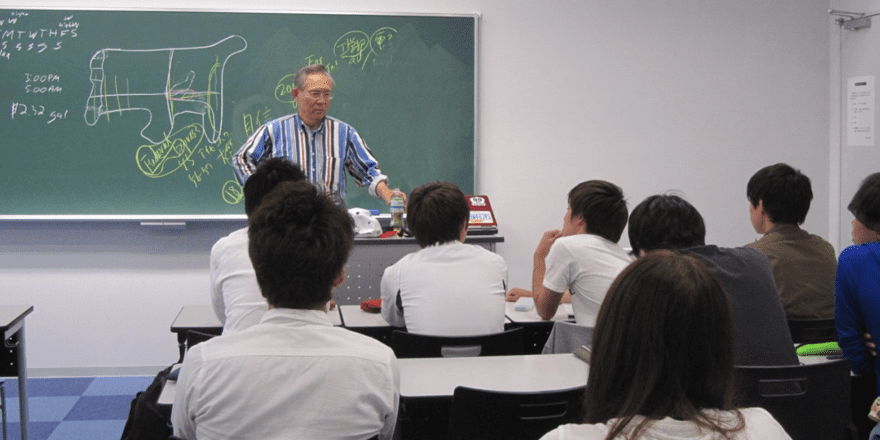
Changing our minds to change our business
NOTES FROM THE GEMBA – It can take time to challenge our misconceptions and set off on a lean journey. Once we get it, however, it’s hard to stop the improvements, as this French company found out.
Words: Catherine Chabiron, lean author and member of Institut Lean France.
Banner image: © Karine Boudart et Richard Soberka - http://www.reportage-photo.com/
I put on my face mask as I reach Billy-Berclau, in the north of France, and step into the facilities of Sefar Fyltis, a specialist in technical fabrics. The lockdown is behind us but uncertainty on the pandemic and current economic downslide prevails. This is a time in which energy, trust and the speed at which we learn are going to make the difference. I am meeting Philippe Counet, Managing Director of Sefar Fyltis, who has strong views on the subject.
When Philippe joined Sefar in 2000 and then took over as MD in 2010, the 200-year-old Swiss group was sound and profitable. But, with time, the old lady had grown to be a bit too slow and heavy for the current market requirements. Managers were undoubtedly on top of things, they were good professionals, but energy was mostly spent on firefighting, saving the day every day.
Philippe remembers with a smile how he found that Lean Thinking could help. He is a member of a managers’ club in France and was once invited to come and play a lean serious game, where a sensei demonstrated step after step the misconceptions the participants had on production, flow and management. When you are a senior manager, leading a company, having your assumptions debunked hurts. But Philippe had a hunch this was exactly what was needed at Sefar and quickly secured the help of a sensei.
We have now reached a room where I meet Marie Louise Proy, in charge of the cut and sew production in Billy-Berclau, and Sylvain Vieuille, who supervises group sales for France. Billy-Berclau designs and manufactures precision fabric filters that are needed in a large array of industries, such as food, mining & refining, pharmaceutical and environment. Each product is tailor-made, and while the company has recurrent customers, their 30,000 variants are a challenge when you want to apply the automotive learnings.
When I ask Marie-Louise and Sylvain whether they welcomed the new lean approach introduced by the sensei, they frown.
IT TAKES TIME
“It was very hard at first,” says Marie Louise. “I remember feeling very angry with our sensei. It was obvious to me I was doing a great job at listening to employees and collecting their ideas, and I could not fathom how I would find time to do what he asked of me.”
Working with a lean sensei – literally a person who has experienced it before - is not a very pleasant experience in the early stages. Yet, it is undoubtedly the most efficient approach to long-term growth.
Philippe nods: “You have to accept it takes time to change your own mind.”
A sensei will develop you into seeing things differently, she will unveil your misconceptions through practice, push you to think harder about causes and options when solving problems. She will teach you to develop a deep interest in micro details and, at the same time, a general perspective that includes customers, external challenges, competition and partners. When you understand deeply what you do and why you do it, you learn how to improve your work.

Sylvain smiles and remembers their initial outraged inner feelings: “He is actually implying that I am not good at my work!”
Senseis usually start pointing out areas that do not work as they should, thus challenging our own expertise. And it can hurt.
They give us exercises, but our firefighting makes it hard for us to find the time for them.
They only focus on the problem they have identified, deliberately ignoring all the other issues we have to deal with. That drives us crazy.
And when we finally succeed to find time, change something, learn from it and proudly show the results, the sensei is already pushing us to the next step.
“It was hard at the beginning, but we would never have achieved what we did without a sensei,” Marie Louise confirms.
Philippe sighs as he tells us the story of a fellow manager who is currently leading a fast lean transformation starting with an audit. Lean consultants have promised results by the end of the year through 5S and visual management. “They will never have the time to change their mind on how things actually work, they will not develop any internal know-how. It’s money down the drain.”
PULL FLOWS ARE EYE OPENERS
To build trust with the teams, they started with small steps. They designed a red flag that could be raised on top of malfunctioning sewing machines to facilitate the identification of problems by maintenance. They had up till then been addressing safety and health issues in batches, which made it very painful. Once lean was introduced, they switched to a daily tour of the plant focused on safety hazards and levelled down the effort – their first encounter with small batches.
But the real starting point was to move to pull flows. Sylvain and Marie Louise take me down to the shop floor: instead of drowning production with all the confirmed orders, whatever their deadline, they show me how they now limit the workload to the coming one or two days. Operators are now given a precise sequence of manufacturing tasks and no longer pick the machine or product they like best. Components (essentially fabric rolls) are no longer pre-assigned in an office, days before, to a given cutting operation, but are pulled to production only when they are needed.
The changes on stock levels and stagnation (products sitting there waiting) within the plant are very clear: just a few years ago, the empty space I see was full of carts carrying fabric rolls, according to Marie Louise. The impact of these changes is very measurable: the lead-time for press filters, one of Sefar Fyltis’s major products, went down from 24 days to 6, a 75% reduction.

Pull flows created clarity: problems could now be seen and addressed as they appeared. One of the first things they revealed was that there was a lot of mura in shipping: the ERP defaulted all the shipping dates to Fridays, resulting in muri on those days and a severe risk of muda. Pull flows also highlighted to need to rethink the batch sizes to gain on lead-time. “The prevailing misconception was that the larger the batch, the smaller the unit cost. But we could now see that large batches create stagnation and generate longer lead-times for customers,” Marie Louise confirms.
They worked on it and decided to reduce the number of parts in each batch. “Experimentation soon showed us we were wrong again,” Marie Louise recollects with a smile. “Work contents are very different from one part to the other. We had to think in terms of production time and reduce the number of hours rather than the number of parts.”
Switching to small batches was also a great opportunity to better respond to emergencies when a customer needed a spare part urgently.

With pull flows came the need to look at what was preventing on-time delivery and dig deep into quality issues. Marie Louise shows me the red bins system the team implemented: there is now a daily discussion with operators around the red bins and the small kaizens on machine set-ups, work gestures and deliberate, “just-in-case” over-production have yielded amazing results. Scrap was cut by 56%. They also discussed and clarified what was an acceptable defect and what was not, what could be reworked or not, displaying the information on easy-to-check boards.
Sylvain chips in: “We thought we were very customer oriented, but it turned out to be wishful thinking in some instances. We were, for example, confirming the order to the customer whether or not we could deliver by the date the customer wanted.” Sylvain and his team have been working hard on customer’s expectations, trying to anticipate them, such as food certificates, or to understand tacit needs not spelled out in the specifications. Focusing more on customers led them to start going on gemba walks with design engineers at the customer premises, and an innovation that makes filter installation easier stemmed out of it.
THE TEMPTATION TO FALL BACK FROM EXPLORATION TO EXECUTION
The lockdown caught everyone by surprise and Sefar decided to keep only volunteers at work in the facilities for the first two weeks. But the order book was full, with customers tempted to over-stock just-in-case, and it took much persuasion and discussion to have everyone back to work. People were anxious and afraid. In such a context, managers were overwhelmed, and everyone fell back to pure daily execution.
“If our sensei had not been there, via video conferences, I am not sure we would have had the energy to start exploring new avenues of improvement,” Marie Louise says.
But they did. Marie Louise shows me how she moved the sewing operations on press filters to a continuous flow by the middle of June, just a month after the end of the lockdown. This was done with the operators, playing with cut-out images of the machines and moving them around a map of the layout, to try and develop a flow that made sense.

As a result, the lead-time went down from three full days to just eight hours. Stagnation in intermediate stocks no longer exists, but there were also gains in the amount of movement taking place at the workstations. The next step will be the shipping area: gains on internal lead-times are not visible to customers yet, since shipping is still largely done in batches. It is obvious the teams in Billy-Berclau are no longer afraid to unveil problems and to address them one by one.
Philippe concludes: “It took time to get started, because it takes time to admit our misconceptions. But once we began to look at things through our lean goggles, improvement opportunities popped up everywhere and things started moving fast.”
THE AUTHOR

Read more


FEATURE – This article analyzes some of the most effective tools lean practitioners can deploy to design solid processes characterized by an effective sequence of tasks and a focus on customer value.


FEATURE - Italian physicist Enrico Fermi is one of history's greatest "lean scientists," who developed a revolutionary approach to research and mentoring from which lean managers can still draw inspiration.


INTERVIEW – In this Q&A with Catherine Chabiron, Toyota veteran Isao Yoshino discusses NUMMI, management at the company, and how to change the mindsets of leaders.


INTERVIEW - We caught up with LEI’s Senior Advisor, Jim Morgan after his plenary talk at the Lean Summit in São Paulo last month and got him to answer a few questions about product development and lean management.

